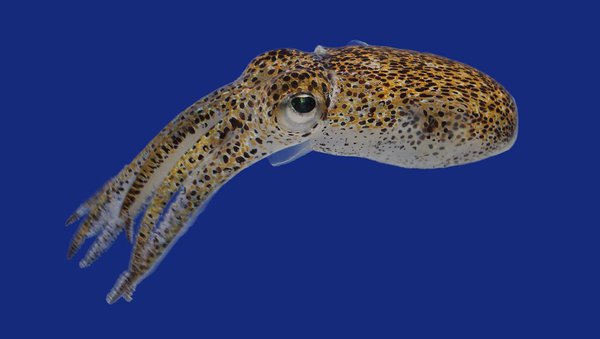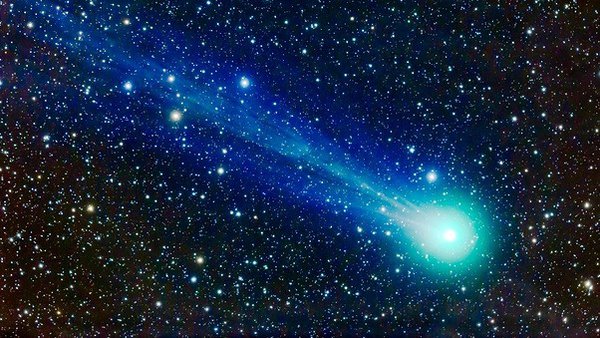Swimming in Space
If you are of a certain age, perhaps you remember going to the movie theatre to see the original Superman movie; when the opening credits started you got goosebumps at the thought of flying through space with the endless blackness only broken by the twinkling of stars around you and some flashes of light? (For those of you who haven't seen it or would like to reminisce watch this ) Now imagine that you are actually experiencing this. Woah.
At certain times of year we get a phenomenon here in the water around La Paz called bioluminescence. You look into the inky blackness of the water and then you start to see stars glittering or comets flying through the water. What you are actually seeing is a dinoflagellate, likely Noctiluca Scintillus, that occurs when we get a high plankton concentration. In winter this happens when nutrient rich water from deeper areas of the Sea of Cortez comes into the bays. If the the conditions are right to push it into the bay where we are at anchor then we get to experience this amazing phenomenon. It can also happen in other months if we get a plankton bloom, usually in summer as the water warms up and this causes more plankton, then you will also get bioluminescence. The chemical reaction occurs because the dinoflagellate contains luciferin, a protein that when combined with oxygen produces light. Sometime the organisms also contain luciferase which is a catalyst that speeds up the reaction. (The word origin 'lucifer' means the bearer of light, rather than referring to the creatures in the satanic sense and understanding of the word! This is because generally the plankton is not a stinger and it is completely harmless for us to be in the water with it.
Organisms produce light for a multitude of reasons, sometime to attract a mate but usually as a defensive reaction against predators. Some use it as a distraction technique for what is hunting them - the flash of light can momentarily blind the predator or it can also be used in a risky manouever to get the attention of a bigger creature which would eat the planktons attacker! We see it when there is movement in the water, either fish, sealions or us as when we knock the plankton and it activates this reaction likely thinking we are predators! In some creatures such as the Hawaiian Bobtail Squid they don't produce the bioluminescence themselves but rather they have a special light organ in their mantle which secretes a mucus to trap bioluminescent bacteria. This is an example of a symbiotic relationship as the squid gets its own magical light show and the bacteria get protection.
In terms of an environmental impact then bioluminescence and the dinoflagellates are not harmful to people however it can be associated with algal blooms. If there is a big algal bloom in an area then sometimes we get a 'red tide' this is where the water looks discoloured due to the algae - often thie eare natural occurences due to an upwelling from deeper water or warming water in spring/ summer. These red tides can be harmful to humans as the algae accumulates up the food chain. Creatures like mussels, clams, oysters etc are filter feeders and the algal collects in them - if us humans eat these shellfish with lots of the algae inside then it can lead to shellfish poisoning as our bodies don't react well. That is why you don't eat shellfish during or a few weeks after a red tide.
It can be an unpredictable occurrence due to weather conditions washing it out into the sea but generally we get algae here in the winter months (think of the whale sharks feeding on it!) but conditions need to be right to wash it into the bays we anchor in. We also get it at the beginning of summer when the water starts to warm up. It also requires the right light conditions - the darker it is the better i.e. no moon and away from any city lights. On our last trip we had one night where we saw it in huge concentrations - the fish were like comets travelling in the water and swimming in it was like being in space but the next two nights there was none due to a change in wind direction and it washed out the bays. It is something really special to see.
So when we see the bioluminescence in the water the best thing to do is jump in! That way you can swim through space, or perhaps make glow angels. It is a surreal and magical experience and for many people a highlight of their adventures here in Baja.
Images this week are courtesy of Google - I have not tried capturing it as we've been having too much fun in it!
Organisms produce light for a multitude of reasons, sometime to attract a mate but usually as a defensive reaction against predators. Some use it as a distraction technique for what is hunting them - the flash of light can momentarily blind the predator or it can also be used in a risky manouever to get the attention of a bigger creature which would eat the planktons attacker! We see it when there is movement in the water, either fish, sealions or us as when we knock the plankton and it activates this reaction likely thinking we are predators! In some creatures such as the Hawaiian Bobtail Squid they don't produce the bioluminescence themselves but rather they have a special light organ in their mantle which secretes a mucus to trap bioluminescent bacteria. This is an example of a symbiotic relationship as the squid gets its own magical light show and the bacteria get protection.
In terms of an environmental impact then bioluminescence and the dinoflagellates are not harmful to people however it can be associated with algal blooms. If there is a big algal bloom in an area then sometimes we get a 'red tide' this is where the water looks discoloured due to the algae - often thie eare natural occurences due to an upwelling from deeper water or warming water in spring/ summer. These red tides can be harmful to humans as the algae accumulates up the food chain. Creatures like mussels, clams, oysters etc are filter feeders and the algal collects in them - if us humans eat these shellfish with lots of the algae inside then it can lead to shellfish poisoning as our bodies don't react well. That is why you don't eat shellfish during or a few weeks after a red tide.
It can be an unpredictable occurrence due to weather conditions washing it out into the sea but generally we get algae here in the winter months (think of the whale sharks feeding on it!) but conditions need to be right to wash it into the bays we anchor in. We also get it at the beginning of summer when the water starts to warm up. It also requires the right light conditions - the darker it is the better i.e. no moon and away from any city lights. On our last trip we had one night where we saw it in huge concentrations - the fish were like comets travelling in the water and swimming in it was like being in space but the next two nights there was none due to a change in wind direction and it washed out the bays. It is something really special to see.
So when we see the bioluminescence in the water the best thing to do is jump in! That way you can swim through space, or perhaps make glow angels. It is a surreal and magical experience and for many people a highlight of their adventures here in Baja.
Images this week are courtesy of Google - I have not tried capturing it as we've been having too much fun in it!


